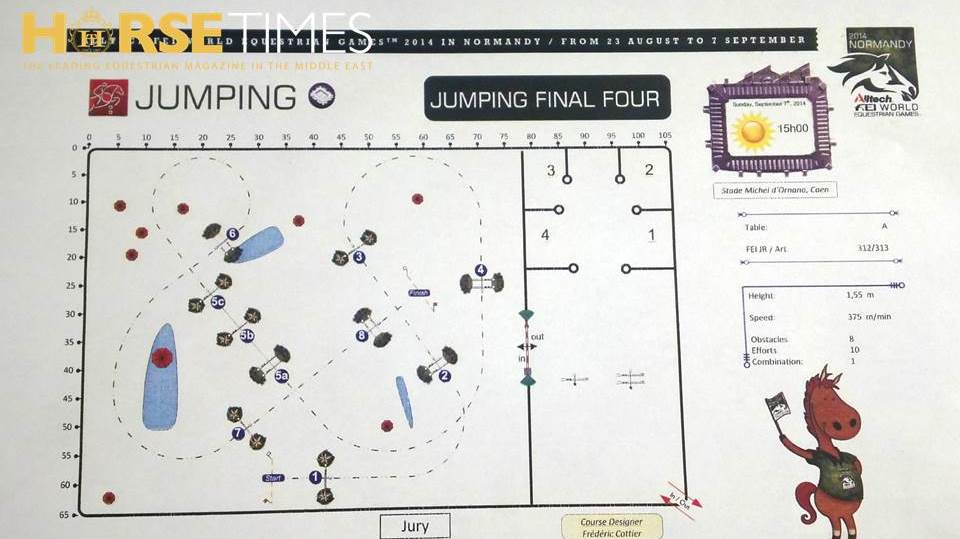We walked the course with Assistant Course Designer Michel Ismalun and veteran rider Michel Robert.
“The philosophy in building a course for the top four is for it to be difficult for the riders but not for the horses, because the horses have jumped five days in a row and we shouldn’t have a jump-off as it won’t be very successful. We want to come out with the best rider and we want the horses to be fresh at the end of the day.
“We do that by making the distances a little bit delicate, it’s not built so big but we have some difficult turns and the time is fair. The course has to be 400 metres according to the rules of the FEI.
“We only have eight jumps including a triple. The warm up is next to the main arena and that will distract the horses because they don’t want to be alone while the other horses are at the same place, so that makes it harder for the riders.
“Fence number 1 is 1.50 cm. with the top fence the same colour of the ground. There’s a lot of air between fence number 1 and fence number 2 and they don’t have to cut the corner because there’s enough time and the first turn is a little bit hard coming back from the fence leaving the gate behind.
“Fence number 2 is the first oxer, it is not too squared and it’s 1.47 m in front, 1.50 m behind and 1.50 m wide with a solid colour beneath to make it acceptable for the horses; so here we can say that the turn is harder than the jump. From fence 2 to 3 it is 5 steady strides 21.5 m which means that instead of putting a long line meaning that the horses will have to jump a little bit long and flat we decided to shorten it from 75 or 80 cm. to get a better jump at the vertical and it’s easier for the riders to take than to push when they’re riding other horses.
“Fence 3 is 1.51 m and we put the plank down so it might be a little faulty if you don’t keep the horses away from the jump. From fence 3 to 4 they have a long distance they’ll have to cross Paris before going to Normandy and they can’t cut the corner and take that risk, especially that they have plenty of time.
“Fence number 4 is a square oxer the width is 1.60 m it’s the first big oxer, 1.50 m in front and 1.50 m behind. From fence number 4 to 5 there’s a little breath before the triple.
“Oxer number 5a is square, it is 1.52 m. tall and 1.50 m wide and the riders have plenty of room to get the horses in the right pace before the triple. The distance between 5a, 5b and 5c is one stride each; for horses that lose their balance there might be faults on b or c.
“The distance between fence 5 and 6 is a role forward it’s an open turn and they have to come in the middle of the fence, it is 1.51 m and 1.55 m wide.
“In my opinion number 6 is the most difficult fence. They have time to breathe again from fence 6 to 7.
“Number 7 is 1.55 m wide, it’s pink and not wide so the riders have to come in the middle of the fence. The last line can be 6 long strides or 7 steady strides.
“Fence number 8 is 1.50 m. and 1.60 m wide. It’s a tough, delicate and progressive course; it goes from the easier to the most complicated.”
--Ends--


